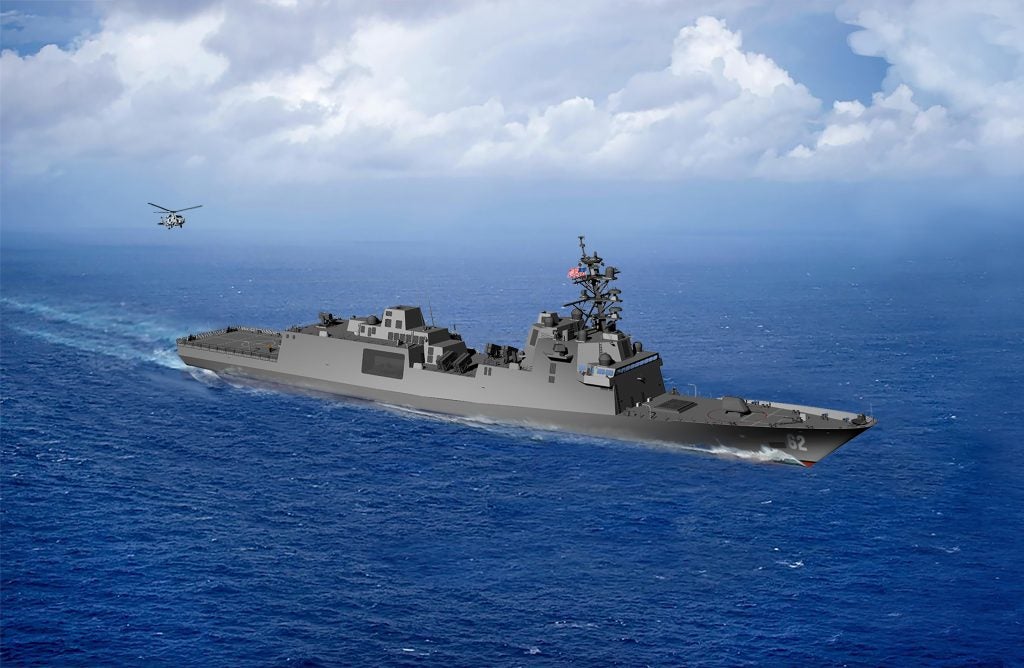USN Selects Fincantieri Design for FFG(X)
The US Navy has announced that it has selected and awarded a contract to Marinette Marine to design and build the first in class new guided missile frigate design. Marinette Marine has partnered with Italy’s Fincantieri to develop that company’s FREMM frigate design into one tailored for service with the US Navy.
FFG(X) will fill the hole left by the retirement of the Oliver Hazard Perry-class frigates in 2015. They will be multi-mission ships, with both Anti-Air Warfare (AAW) and Anti-Submarine Warfare (ASW) capabilities. The full suite of capabilities is best stated in the announcement from Naval Sea Systems Command: “FFG(X) will include an Enterprise Air Surveillance Radar (EASR) radar, Baseline Ten (BL10) AEGIS Combat System, a Mk 41 Vertical Launch System (VLS), communications systems, MK 57 Gun Weapon System (GWS), countermeasures and added capability in the EW/IO area with design flexibility for future growth.” All of this is centered on commonality with other ships of the battle force.
The EASR will be the core radar suite of the forthcoming USS Enterprise (CVN-80) and USS Doris Miller (CVN-81). The AEGIS combat suite is in service on all Ticonderoga-class cruisers and Arleigh Burke-class destroyers, as is the Mk. 41 VLS. The Mk. 110 57mm gun system is common to all Littoral Combat ships, and it is a good bet that the communications, EW, and other equipment fits will share commonality with other in-service ships. This reduces the risk, and cost, of the class dramatically, and enables an expected sub-$800 million unit cost for ships two through ten.
Keeping prices under control has been a major aspect of the whole FFG(X) program. The staggering costs of the latest Arleigh Burke-class destroyers, Ford-class CVNs, and expected costs for the Columbia-class SSBNs has meant that an affordable ship is absolutely essential to the Navy at the moment. Assistant Secretary for Acquisitions, James ‘Hondo’ Guerts, said: “Throughout this process, the government team and our industry partners have all executed with a sense of urgency and discipline, delivering this contract award three months ahead of schedule. The team’s intense focus on cost, acquisition, and technical rigor, enabled the government to deliver the best value for our taxpayers as we deliver a highly capable next generation Frigate to our Warfighters.”
The FREMM-based design beat out competition from Austal USA, a team comprised of Bath Iron Works and Spain’s Navantia, and Huntington Ingalls. They were pitching, respectively, a stretched Independence-class LCS derivative, a development of the F-100 design, and an unknown design that was presumed to be a stretched version of the National Security-class cutter. The joint Lockheed-Marinette Marine team that was offering a stretched Freedom-class derivative dropped out last year, citing a desire to focus on the various sub-systems they were already contracted to provide to whatever design won the competition.
No delivery date has been set for the first in class of the new class, but it will likely not be for several years yet to come.

